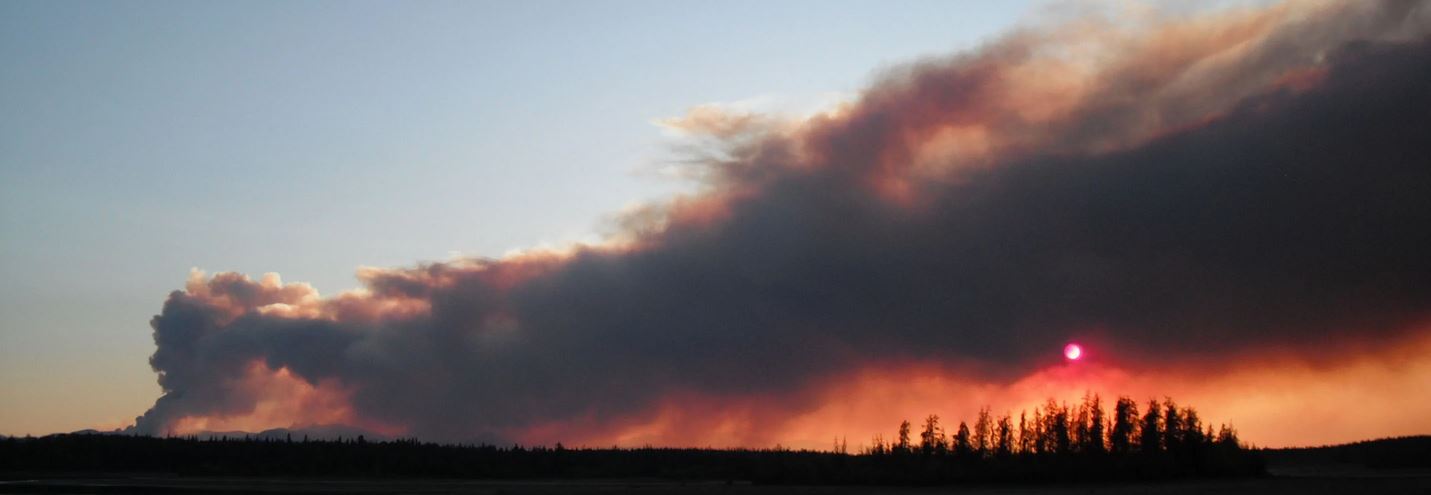
Photo: Smoke from Canadian wildfires.
Photo Credit: IQAir. (2023). Smoke from Canadian wildfires. [Photograph]. Michigan Air Quality Alert: Canada wildfire smoke impacts air quality.
When I first moved into our trailer, I quickly learned about the dangers of combustion gases. The exhaust on our gas dryer was seated improperly and I was poisoned by invisible carbon monoxide. I was lucky enough to escape because I recognized the symptoms before it built up to deadly levels. Since we had just moved in, we had not yet installed a carbon monoxide alarm, but now it’s one of my most valued possessions.
Being aware of the air quality is essential, especially during the colder months of the year when gas furnaces are starting up again. Ventilation is key, and it’s good to get your systems checked at the start of winter, but more importantly, you should always have a working carbon monoxide alarm. Self-checks of carbon monoxide alarms should be performed monthly along with your fire alarms, and the batteries should be replaced yearly, according to the Consumer Product Safety Commission. I always check mine in fall before I start the furnace for the season.
Now that you’ve got the inside of your home safe, what about the outdoors? The air outside is unfortunately not always safe to breathe. There can be smoke from forest fires, smog, ozone, or other harmful particulates. It’s good to keep track of the local AQI, or Air Quality Index, which is the measurement used to determine the safety of the air. This will allow you to better understand any precautions you’ll need to take if you plan on going outdoors.

Photo Legend: The Air Quality Index (AQI) categories and colors.
Photo Credits: Knudsen, T. (2022). The Air Quality Index (AQI) categories and colors.
[Image] The Air Quality Index (AQI) Basics & Beyond. Lane Regional Air Protection Agency.
If the AQI is 151 or above (or 100 or above for sensitive groups like those with asthma or heart disease), the EPA and American Lung Association advise to stay indoors. While you’re indoors, you’re still not entirely safe. EPA studies have shown that the average indoor level of pollutants can be two to five times that of outside air. To provide you with fresh air indoors, the best course of action is proper filtration.
The EPA outlines how to make your own cheap DIY portable air filtration system with the help of a box fan, a Merv 13+ furnace filter, and duct tape. This will allow you to keep a personal filter with you in each room without having to use your air conditioner or furnace. Keeping your rooms properly filtered can reduce indoor particulates, but you must change the filter once it is exhausted just like the ones on your furnace.

Photo Legend: DIY portable air filter infographic.
Photo Credits: EPA. (2024). DIY Air Cleaner to Reduce Wildfire Smoke Indoors: Basic
Design Infographic. Research on DIY Air Cleaners to Reduce Wildfire Smoke Indoors. United States Environmental Protection Agency.
Air quality impacts all of us and staying mindful of what you breathe is imperative in our world today. Below are four ways to stay safe this winter and keep a “breath of fresh air” in your home.
Actions for Breathing Cleaner Air
- Ventilate homes with gas appliances and get them checked
- Install a carbon monoxide detector, test often, and replace the batteries yearly
- Stay indoors if AQI is poor
- Make your own portable air purifier with a box fan and a Merv 13 furnace filter
Sources
- Change Smoke and Carbon Monoxide Alarm Batteries
- Study of indoor-outdoor air quality relationships
- Patient Exposure and Air Quality Index
- Air Quality Index
- DIY Air Cleaners
- Wildfire Clean Room DIY
Tags: Sustainability
